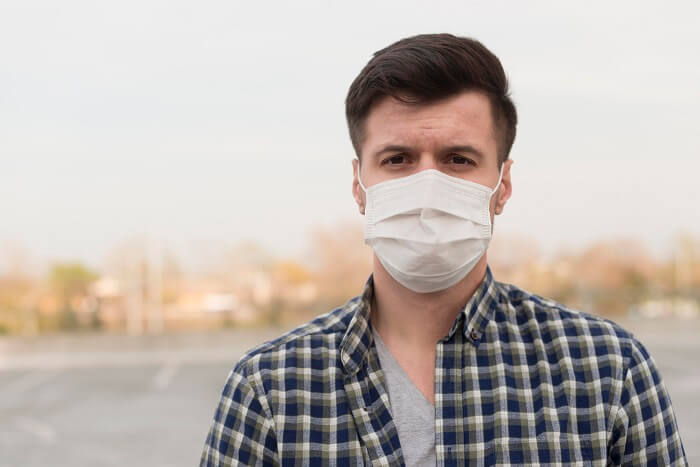Most businesses in Ontario did not plan for the events of COVID-19. You probably noticed this as businesses tried different ways to protect workers who may be exposed to the COVID-19 virus.

I remember going into retail stores before they shut them down and seeing the different ways they were protecting workers. You would go into a store one day and they had lines on the floor. The next day they put skids in front of cashiers to force distancing from customers. The next day they had plexiglass panels installed.
It has been very interesting to see what protective measures were being put into place as a result of this pandemic.
Then the Ontario Government came up with the Essential Workplaces List that dictated who could stay open and who had to close their doors. I wonder how many businesses planned for that to happen?
The lesson learned here is that emergencies like this one need to be planned for in advance. I think moving forward, you will see businesses develop continuity plans for events that would impact like COVID-19.
If businesses did not have a continuity plan in place for this kind of thing, they likely did not plan on how they will get back to work as the threat diminishes. Getting back to work will need to be a controlled event to ensure workers are adequately protected.
The Ministry of Health released a guideline for a business called “COVID-19 Guidance for Industry Operators” on March 29, 2020 that is intended for a business that will be working during the pandemic. I anticipate that all companies will be required to follow these guidelines as a condition to return to work.
This guideline speaks to the following:
- A summary of COVID-19, symptoms and how to protect yourself and others
- Physical Distancing including self-isolate for 14 days and what to do while you are off
- General Guidance for Workplaces that includes screening everyone who enters the workplace, maintaining a spatial distance of 2 metres, training to workers and contacting public health for consultative advice
- Guidance for screening that talks about passive and active screening
- Additional precaution including temperature checks
- OHSA, speaks to reporting to the MLTSD should a worker be diagnosed with COVID-19
- Cleaning & sanitizing, this identifies the proper way of cleaning and sanitizing using effective cleaning solutions. And what things should be considered when cleaning
Working through COVID-19
If you are currently open for business or planning to get back to work, it will not be “Business as Usual.” Nowhere near “usual”! We must keep in mind in addition to the Ministry of Health guideline, we must also follow Ontario’s safety laws to ensure the safety of workers. Our Health & Safety Laws do not specifically speak to what employers must do to protect workers against COVID-19. OHSA clearly says that it is the employer’s responsibility to take every precaution reasonable for the protection of workers. The big question is, what does that look like for my business?
What will the businesses need to do to open their doors or continue working if you did not close? The first thing that you should do is conduct a risk assessment that addresses the hazards of working with the COVID-19 pandemic still active.
FREE RESOURCE:
Once you have done this risk assessment and understand where your workers may be exposed to Covid-19, you can then start planning on how you will protect them.
Once you understand what kind of controls need to be implemented, the next step is to define how you will apply those controls and keep workers safe. This is done by developing a procedure that will determine how you will work with this identified hazard. Some also call this a safe work instruction. This may be part of a policy on how you will manage infectious diseases.
Below is an example of considerations when developing your plan.
- Define how you will educate workers
- Postings on COVID-19, Social Distancing
- Safety talks
- Screening of persons coming into our workplace
- Define any training requirements such as how to use the PPE and how to report a violation of policy or exposure to COVID-19
- Define how our company will sanitize the workplace
- Washrooms, eating areas, change rooms, tools and equipment, cars & vehicles, offices and common areas such as stairways and handrails
- Define how you will keep workers apart
- For areas that workers cannot maintain distance, how will you protect those?
- Define what Personal Protective Equipment will be required to be worn
- Latex gloves, N-95 masks, face shields, safety glasses, tyvek suites etc.
- Define any specific safe work instructions that workers must follow;
- Hand washing, maintaining distance and Wearing PPE
- Define which jobs can be moved out of the workplace (working from home)
- May need to include how those workers would come into the workplace if they need to
- Define how workers are to report possible COVID-19 exposure both at work and during off-work hours, including out of city/ country travel. Define if they will be required to self-quarantine
- Define who is responsible for enforcement of the policy and consequences if the policy is not followed.
Businesses will need to demonstrate that they have done this risk assessment and developed safe work instructions for workers when opening their business. This will allow the employer to show to their workers and the authorities that they understand the risks, and have put controls in place to mitigate them.
We must also keep in mind that the policy and procedure that you will be developing will need to be fluid; the first month that you implement the policy may look different from the next month and will eventually bring us back to something normal. Your business may need to update the risk assessment to determine if some rules can be changed to meet the new measure of threats.
Lastly, as the new Canadian saying say – Stronger Together. We should all work together to protect our workers, their families and our community. Contact other businesses in your community to ask them what they are doing, how they are overcoming certain situations. They may be able to share with you some creative means of protecting their workers.
Industrial Safety Trainers is there for you during these uncertain times. If you have any questions or concerns, please contact us at [email protected]
Randy Dignard
Senior Safety Consultant







